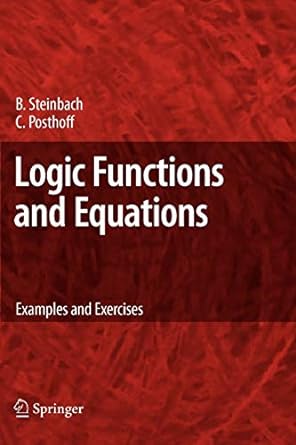Take the functions f(x) and g(x) of Exercise 3.3 and the solution vector (b1, b2, b3, b4,
Question:
Take the functions f(x) and g(x) of Exercise 3.3 and the solution vector (b1, b2, b3, b4, b5) = (10000) and compare successively the number of solutions of subequations:
1 f(x1 = b1) = 1 and g(x1 = b1) = 1, 2 f(x1 = b1, x2 = b2) = 1 and g(x1 = b1, x2 = b2) = 1, 3 f(x1 = b1, x2 = b2, x3 = b3) = 1 and g(x1 = b1, x2 = b2, x3 = b3) = 1, 4 f(x1 = b1, x2 = b2, x3 = b3, x4 = b4) = 1 and g(x1 = b1, x2 = b2, x3 = b3, x4 = b4) = 1, 5 f(x1 = b1, x2 = b2, x3 = b3, x4 = b4, x5 = b5) = 1 and g(x1 = b1, x2 = b2, x3 = b3, x4 = b4, x5 = b5) = 1.
Fantastic news! We've Found the answer you've been seeking!
Step by Step Answer:
Related Book For 

Logic Functions And Equations Examples And Exercises
ISBN: 978-9048181650
1st Edition
Authors: Bernd Steinbach ,Christian Posthoff
Question Posted:





